Partial Birth

Partial-birth abortions
3rd Trimester : D&X
Partial-birth abortion is a late-term abortion procedure. In 1992, the National Abortion Federation sponsored a presentation by abortionist Martin Haskell entitled, Dilation and Extraction for Late Second Trimester Abortion. In the presentation, Haskell graphically described the partial-birth abortion technique, known in the medical community as dilation and extraction (D&X).
"The initial step in performing a partial-birth abortion involves two days of dilating the mother's cervix. Afterward, the abortionist uses an ultrasound probe to locate the lower extremities of the unborn baby. He then works large grasping forceps through the mother's vaginal and cervical canals and into her uterus.
The abortionist grasps a leg of the infant with the forceps and pulls the leg into the mother's vagina. "With a lower extremity in the vagina, the surgeon uses his fingers to deliver the opposite lower extremity, then the torso, the shoulders and the upper extremities. The skull lodges at the internal cervical os," Haskell explained.
While clutching the baby's shoulders, Haskell continued, the abortionist then "takes a pair of blunt curved Metzenbaum scissors... He carefully advances the tip, curve down, along the spine and under his middle finger until he feels it contact the base of the skull under the tip of his middle finger... The surgeon then forces the scissors into the base of the skull. Having safely entered the skull, he then spreads the scissors to enlarge the opening.
The surgeon removes the scissors and introduces a suction catheter into this hole and evacuates the skull contents. With the catheter still in place, he applies traction to the fetus, removing it completely from the patient."Dilation and Extraction for Late Second Trimester Abortion, Martin Haskell, M.D., National Abortion Federation Risk Management Seminar, September 13 - 14, 1992, Dallas, Texas
D&X Abortions are done
- After 4 or 5 months
- 80% of babies are normal
- Most babies are viable
D&X : Absolutely Unnecessary
To remove the baby feet first was called a "version & breech delivery." This was abandoned decades ago as it was too dangerous. Instead today the much safer Caesarean Section is used. Dr. Warren Hern, author of the late term abortion medical text said,
I would dispute any statement that this is the safest procedure to use. The procedure can cause amniotic fluid embolism or placental abruption.
But Hern is contradicted by Surgeon General Koop
With all that modern medicine has to offer, partial-birth abortions are not needed to save the life of the mother, and the procedure's impact on a woman's cervix can put future pregnancies at risk.
Former Surgeon General C. Everett Koop, M.D. Letter to the Editor The New York Times, September 26, 1996
Dr. Pamela Smith, Director of Medical Education, Dept. of Ob-Gyn at Mt. Sinai Hospital in Chicago, has stated:
"There are absolutely no obstetrical situations encountered in this country which would require partial-birth abortion to preserve the life or health of the mother."
And she adds two more risks: cervical incompetence in subsequent pregnancies caused by three days of forceful dilation of the cervix, and uterine rupture caused by rotating the foetus in the womb.
Joseph DeCook, Fellow, Am. Col., Ob/Gyn, founder of PHACT stated:
"There is no literature that testifies to the safety of partial birth abortions. It's a maverick procedure devised by maverick doctors who wish to deliver a dead fetus. Such abortions could lead to infection causing sterility." Also, "Drawing out the baby in breech position is a very dangerous procedure and could tear the uterus. Such a ruptured uterus could cause the mother to bleed to death in ten minutes.".. "The puncturing of the child's skull produces bone shards that could puncture the uterus."
"Our panel could not find any identified circumstance in which the procedure was the only safe and effective abortion method." The American Medical Association supported the federal ban on partial-birth abortions passed by Congress and vetoed by President Clinton. Daniel H. Johnson, Jr., M.D. Letter to the Editor The New York Times, May 26, 1997
Aborting disabled children
Supporters of partial-birth abortion, including former US President Clinton, state that the majority of partial-birth abortions take place in cases where the foetus suffers from abnormalities or severe defects. However, abortionist Martin Haskell told American Medical News (July 5, 1993) that most of his partial-birth abortions were elective, meaning there was no medical reason for the abortion.
Ohio abortionist Martin Ruddock told The Washington Post (September 17, 1996) that more than one-half of his partial birth abortions involve normal foetuses.
Ron Fitzsimmons, Executive Director of the National Coalition of Abortion Providers, confessed to American Medical News (March 3, 1997) that he "lied through his teeth" during a 1995 interview with ABC's Nightline when he stated that women had partial-birth abortions only in the most extreme circumstances of life endangerment or foetal anomaly. Fitzsimmons went on to say that a vast majority of these abortions are performed on healthy babies and healthy mothers.
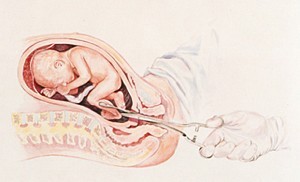 | 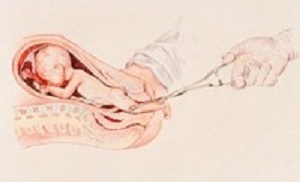 |
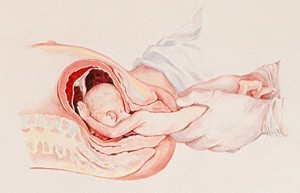 | 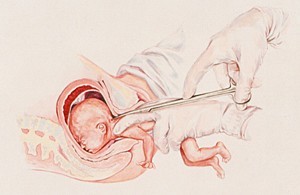 |
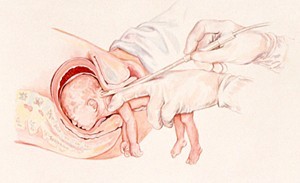
What the Nurse saw
In September, 1993, Brenda Pratt Shafer, a registered nurse with thirteen years of experience, was assigned by her nursing agency to an abortion clinic. Since Nurse Shafer considered herself "very pro-choice," she didn't think this assignment would be a problem. She was wrong. This is what Nurse Shafer saw:
"I stood at the doctor's side and watched him perform a partial-birth abortion on a woman who was six months pregnant. The baby's heartbeat was clearly visible on the ultrasound screen. The doctor delivered the baby's body and arms, everything but his little head. The baby's body was moving. His little fingers were clasping together. He was kicking his feet.
The doctor took a pair of scissors and inserted them into the back of the baby's head, and the baby's arms jerked out in a flinch, a startle reaction, like a baby does when he thinks that he might fall. Then the doctor opened the scissors up. Then he stuck the high-powered suction tube into the hole and sucked the baby's brains out. Now the baby was completely limp. I never went back to the clinic. But I am still haunted by the face of that little boy. It was the most perfect, angelic face I have ever seen.
Statement of Brenda Pratt Shafer, R.N.
Brenda Shafer also testified before the Subcommittee on the Constitution Committee on the Judiciary U.S. House of Representatives Hearing on The Partial-Birth Abortion Ban Act (HR 1833) March 21, 1996. This was her testimony and its on political and historical record:
Mr. Chairman and honorable members of the Judiciary Committee, I am Brenda Pratt Shafer. I am here before you, at the request of the Committee, to relate to you my experience as an eyewitness to what is now known as the partial-birth abortion procedure.
I am a registered nurse, licensed in the State of Ohio, with 14 years of experience. In 1993, I was employed by Kimberly Quality Care, a nursing agency in Dayton, Ohio. In September, 1993, Kimberly Quality Care asked me to accept assignment at the Women's Medical Center, which is operated by Dr. Martin Haskell. I readily accepted the assignment because I was at that time very pro-choice. I had even told my teenage daughters that if one of them ever got pregnant at a young age, I would make them get an abortion. They disagreed with me on this, and one of them even wrote an essay for a high school class that mentioned how we differed on the issue.
So, because of the strong pro-choice views that I held at that time, I thought this assignment would be no problem for me. But I was wrong. I stood at a doctor's side as he performed the partial-birth abortion procedure- and what I saw is branded forever on my mind. I worked as an assistant nurse at Dr. Haskell's clinic for three days- September 28, 29, and 30, 1993.
On the first day, we assisted in some first-trimester abortions, which is all I'd expected to be involved in. (I remember that one of the patients was a 15-year-old-girl who was having her third abortion.) On the second day, I saw Dr. Haskell do a second-trimester procedure that is called a D & E (dilation and evacuation). He used ultrasound to examine the fetus.
Then he used forceps to pull apart the baby inside the uterus, bringing it out piece by piece and piece, throwing the pieces in a pan. Also on the first two days, we inserted laminaria to dilate the cervixes of women who were being prepared for the partial-birth abortions-- those who were past the 20 weeks point, or 4 1/2 months. (Dr. Haskell called this procedure "D & X", for dilation and extraction.) There were six or seven of these women.
On the third day, Dr. Haskell asked me to observe as he performed several of the procedures that are the subject of this hearing. Although I was in that clinic on assignment of the agency, Dr. Haskell was interested in hiring me full time, and I was being given orientation in the entire range of procedures provided at that facility. I was present for three of these partial-birth procedures. It is the first one that I will describe to you in detail.
The mother was six months pregnant (26 1/2 weeks). A doctor told her that the baby had Down Syndrome and she decided to have an abortion. She came in the first two days to have the laminaria inserted and changed, and she cried the whole time. On the third day she came in to receive the partial-birth procedure.
Dr. Haskell brought the ultrasound in and hooked it up so that he could see the baby. On the ultrasound screen, I could see the heart beating. As Dr. Haskell watched the baby on the ultrasound screen, the baby's heartbeat was clearly visible on the ultrasound screen. Dr. Haskell went in with forceps and grabbed the baby's legs and pulled them down into the birth canal.
Then he delivered the baby's body and the arms everything but the head. The doctor kept the baby's head just inside the uterus. The baby's little fingers were clasping and unclasping, and his feet were kicking. Then the doctor stuck the scissors through the back of his head, and the baby's arms jerked out in a flinch, a startle reaction, like a baby does when he thinks that he might fall.
The doctor opened up the scissors, stuck a high-powered suction tube into the opening and sucked the baby's brains out. Now the baby was completely limp. I was really completely unprepared for what I was seeing. I almost threw up as I watched the doctor do these things.
Mr. Chairman, I read in the paper that President Clinton says that he is going to veto this bill. If President Clinton had been standing where I was standing at that moment, he would not veto this bill. Dr. Haskell delivered the baby's head. He cut the umbilical cord and delivered the placenta. He threw that baby in a pan, along with the placenta and the instruments he'd used. I saw the baby move in the pan. I asked another nurse and she said it was just "reflexes."
I have been a nurse for a long time and I have seen a lot of death- people maimed in auto accidents, gunshot wounds, you name it. I have seen surgical procedures of every sort. But in all my professional years, I had never witnessed anything like this.The woman wanted to see her baby, so they cleaned up the baby and put it in a blanket and handed it to her. She cried the whole time, and kept saying,
I'm so sorry, please forgive me!
I was crying too. I couldn't take it. That baby boy had the most perfect angelic face I have ever seen. I was present in the room during two more such procedures that day, but I was really in shock. I tried to pretend that I was somewhere else, to not think about what was happening. I just couldn't wait to get out of there. After I left that day, I never went back. These last two procedures, by the way, involved healthy mothers with healthy babies.
I was very much affected by what I had seen. For a long time, sometimes still, I had nightmares about what I saw in that clinic that day. That's why, last July, I wrote a letter to Congressman Tony Hall of Dayton, in support of the bill, telling what I had seen. And that led to me being asked to tell others what I'd seen, just as I am doing here today. Mr. Chairman, since I wrote that letter to I have been subjected to some strange attacks on my credibility, and I would like to address these briefly.
Testimony OF D&X Abortionist: Leroy Carhart
In early December it was discovered that the University of Nebraska Medical Center was conducting experiments using brain tissue from pre-born children killed by the notorious partial birth abortionist Leroy Carhart. What follows is court testimony from July '97 where abortionist Carhart explains how he commits abortions.
When Larry Donlan of Rescue The Heartland attempted to read this statement at a N.U. Regents board meeting on Saturday December 11th, Regent Drew Miller tried to stop him claiming Carhart didn't use this "procedure" for UNMC." Carhart is a specialist and the D&X is his specialty, which just so happens to be perfectly suited for collecting live brain tissue, so why wouldn't he use it?" Donlan responded.
"Do you normally seek the services of a specialist and then tell him not to use his specialty? And if you insist he doesn't use this method then tell us what method he does use?" Mr. Miller had no answer to these questions so Donlan continued reading. It was taped and played on a local radio program, the Steve Brown Show, the following Monday. It became a topic on that show for the next couple of days.
As Donlan read, a baby could be heard crying in the background.
Under oath in July 1997, abortionist Carhart comments on how he commits abortions. Here he is questioned by his attorney:
Question: Are there times when you don't remove the fetus intact?
Carhart: Yes, sir.
Question: Can you tell me about that, when that occurs?
Carhart: That occurs when the tissue fragments, or frequently when you rupture the membranes, an arm will spontaneously prolapse through the oz. I think most...statistically the most common presentation, we talk about the forehead or the skull being first. We talked about the feet being first, but I think in probably the great majority of terminations.
it's what the world call a transverse lie, so really you're looking at a side profile of a curved fetus. When the patient...the uterus is already starting to contract and they are starting to miscarry, when you rupture the waters, usually something prolapses through the uterine, through the cervical os, not always, but very often an extremity will.
Question: What do you do then?
Carhart: My normal course would be to dismember that extremity and then go back and try to take the fetus out either foot or skull first, whatever end I can get to first.
Question: How do you go about dismembering that extremity?
Carhart: Just traction and rotation, grasping the portion that you can get a hold of which would be usually somewhere up the shaft of the exposed portion of the fetus, pulling down on it through the os, using the internal os as your counter-traction and rotating to dismember the shoulder or the hip or whatever it would be. Sometimes you will get one leg and you can't get the other leg out.
Question: In that situation, when you pull on the arm and remove it, is the fetus still alive?
Carhart: Yes.
Question: Do you consider an arm, for example, to be a substantial portion of the fetus?
Carhart: In the way I read it, I think if I lost my arm, that would be a substantial loss to me. I think I would have to interpret it that way.
Question: And then what happens next after you remove the arm? You then try to remove the rest of the fetus?
Carhart: Then I would go back and attempt to either bring the feet down or bring the skull down, or even sometimes you bring the other arm down and remove that also and then get the feet down.
Question: At what point is the fetus...does the fetus die during that process?
Carhart: I don't really know. I know that the fetus is alive during the process most of the time because I can see fetal heartbeat on the ultrasound.
The Court: Counsel, for what it's worth, it still is unclear to me with regard to the intact D&E when fetal demise occurs.
Question: Okay, I will try to clarify that. In the procedure of an intact D&E where you would start foot first, with the situation where the fetus is presented feet first, tell me how you are able to get the feet out first.
Carhart: Under ultrasound, you can see the extremities. You know what is what. You know what the foot is, you know, what the arm is, you know, what the skull is. By grabbing the feet and pulling down on it or by grabbing a knee and pulling down on it, usually you can get one leg out, get the other leg out and bring the fetus out. I don't know where this...all the controversy about rotating the fetus comes from. I don't attempt to do that. I just attempt to bring out whatever is the proximal portion of the fetus.
Question: At the time that you bring out the feet in this example, is the fetus still alive?
Carhart: Yes.
Question: Then what's the next step you do?
Carhart: I didn't mention it. I should. I usually attempt to grasp the cord first and divide the cord, if I can do that.
Question: What is the cord?
Carhart: The cord is the structure that transports the blood, both arterial and venous, from the fetus to the back to the fetus, and it gives the fetus its only source of oxygen, so that if you can divide the cord, the fetus will eventually die, but whether this takes five minutes or fifteen minutes and when that occurs, I don't think anyone really knows.
Question: Are there situations where you don't divide the cord?
Carhart: There are situations when I can't.
Question: What are those?
Carhart: I just can't get to the cord. It's either high above the fetus and structures where you can't reach up that far. The instruments are only 11 inches long.
Question: Let's take the situation where you haven't divided the cord because you couldn't, and you have begun to remove a living fetus feet first. What happens next after you have gotten the feet removed?
Carhart: We remove the feet and continue with traction on the feet until the abdomen and the thorax came through the cavity. At that point, I would try ... you have to bring the shoulders down, but you can get enough of them outside, you can do this with your finger outside of the uterus, and then at that point the fetal ... the base of the fetal skull is usually in the cervical canal.
Question: What do you do next?
Carhart: And you can reach that, and that's where you would rupture the fetal skull to some extent and aspirate the contents out.
Question: At what point in that process does fetal demise occur between initial remove...removal of the feet or legs and the crushing of the skull, or I'm sorry, the decompressing of the skull?
Carhart: Well, you know, again, this is where I'm not sure what fetal demise is. I mean, I honestly have to share your concern, your Honor. You can remove the cranial contents and the fetus will still have a heartbeat for several seconds or several minutes, so is the fetus alive? I would have to say probably, although I don't think it has any brain function, so it's brain dead at that point.
Question: So the brain death might occur when you begin suctioning out of the cranium?
Carhart: I think brain death would occur because the suctioning to remove contents is only two or three seconds, so somewhere in that period of time, obviously not when you penetrate the skull, because people get shot in the head and the don't die immediately from that, if they are going to die at all, so that probably is not sufficient to kill the fetus, but I think removing the brain contents eventually will.
Later under cross examination from the AG'S counsel, Carhart stated:
 | "My intent in every abortion I have ever done is to kill fetus and terminate the pregnancy. - Leroy Carhart |